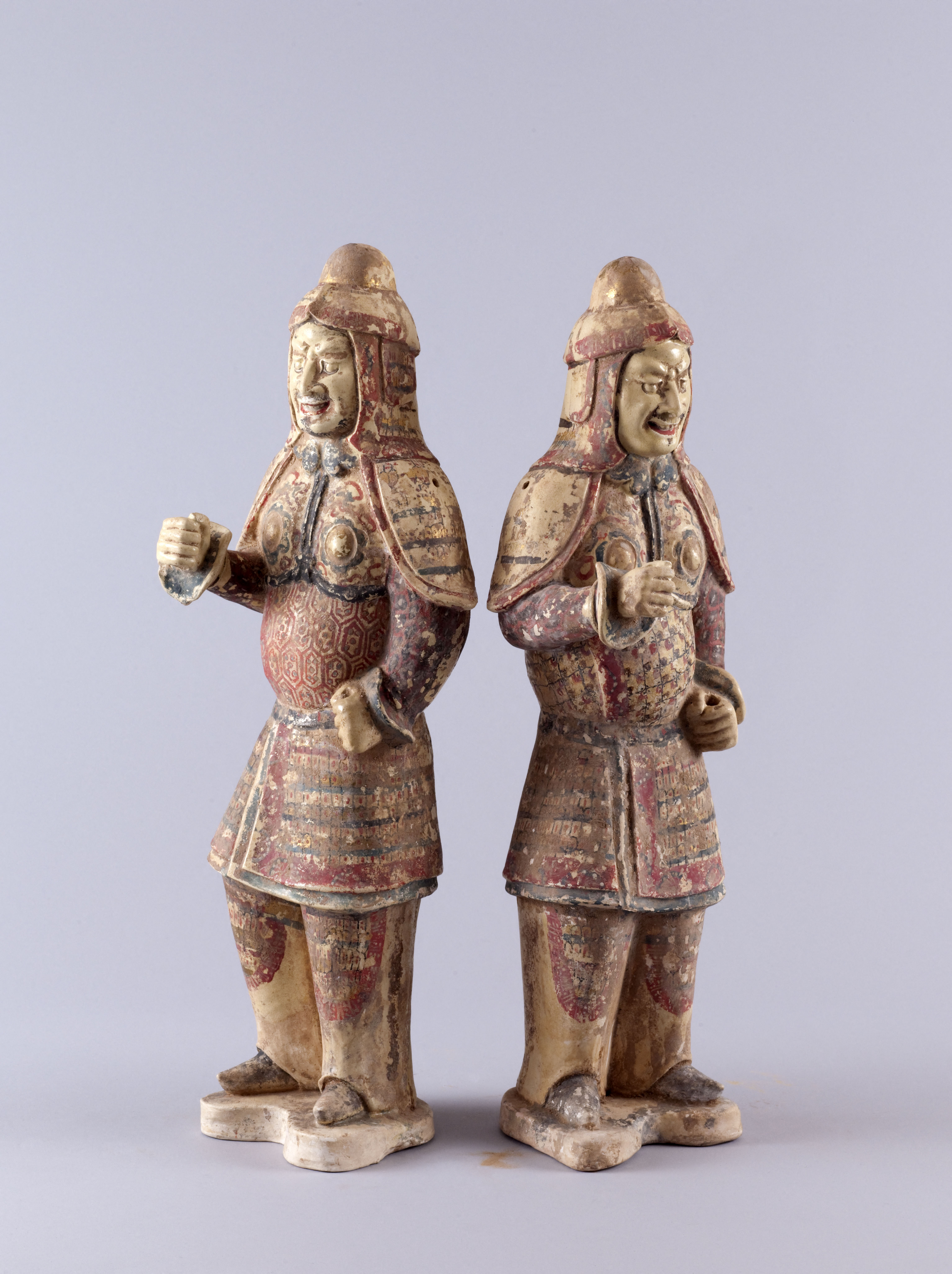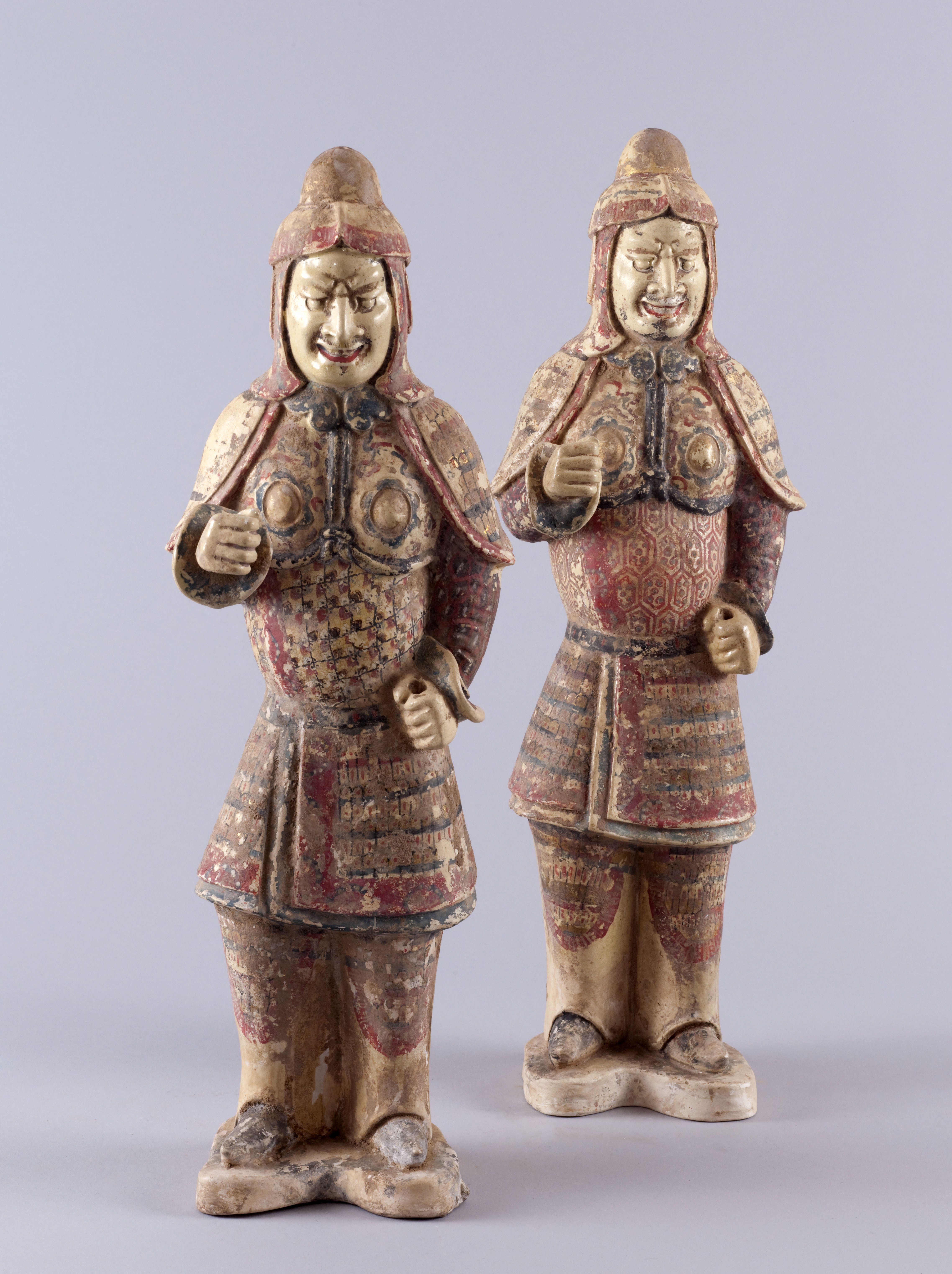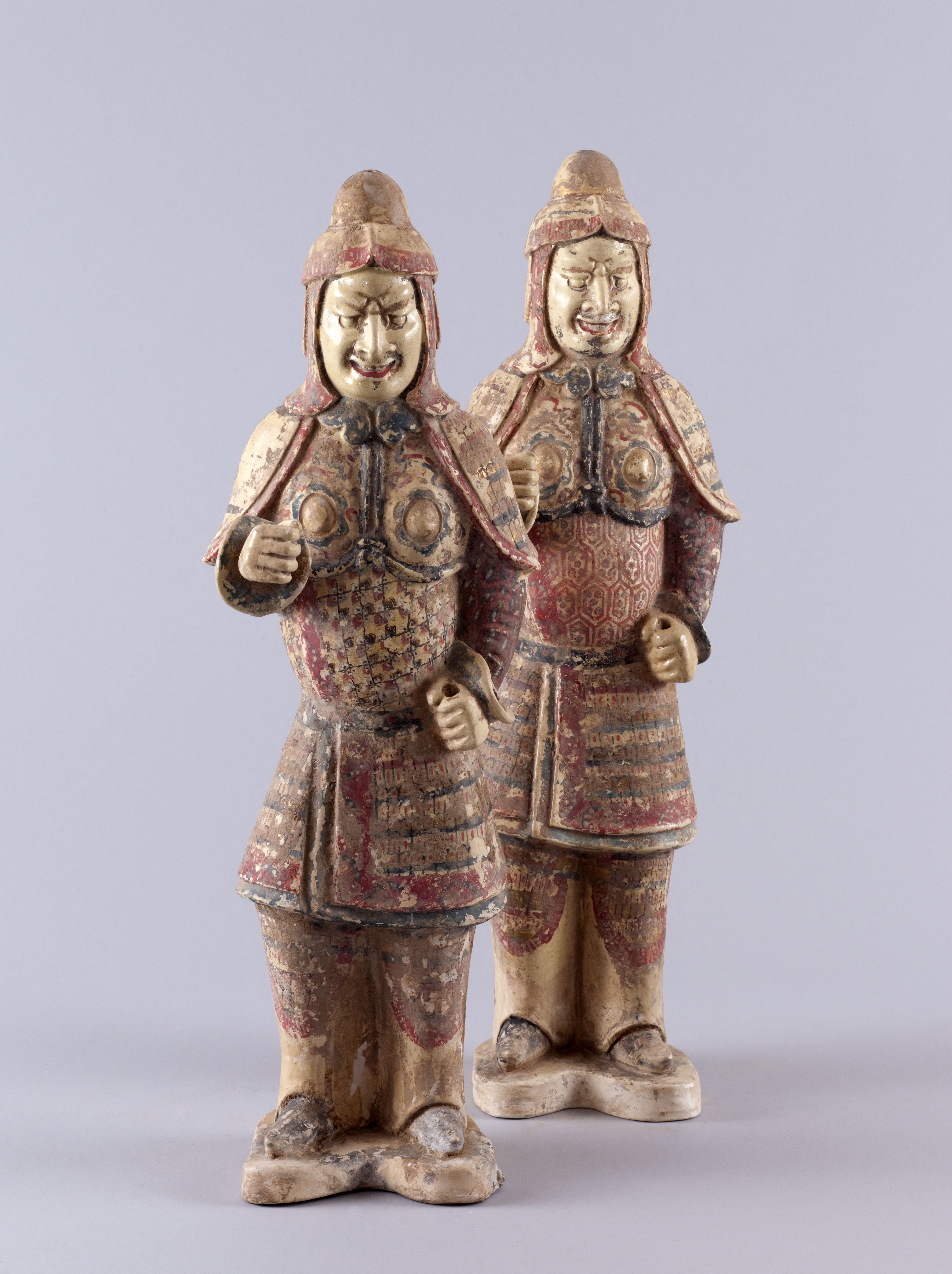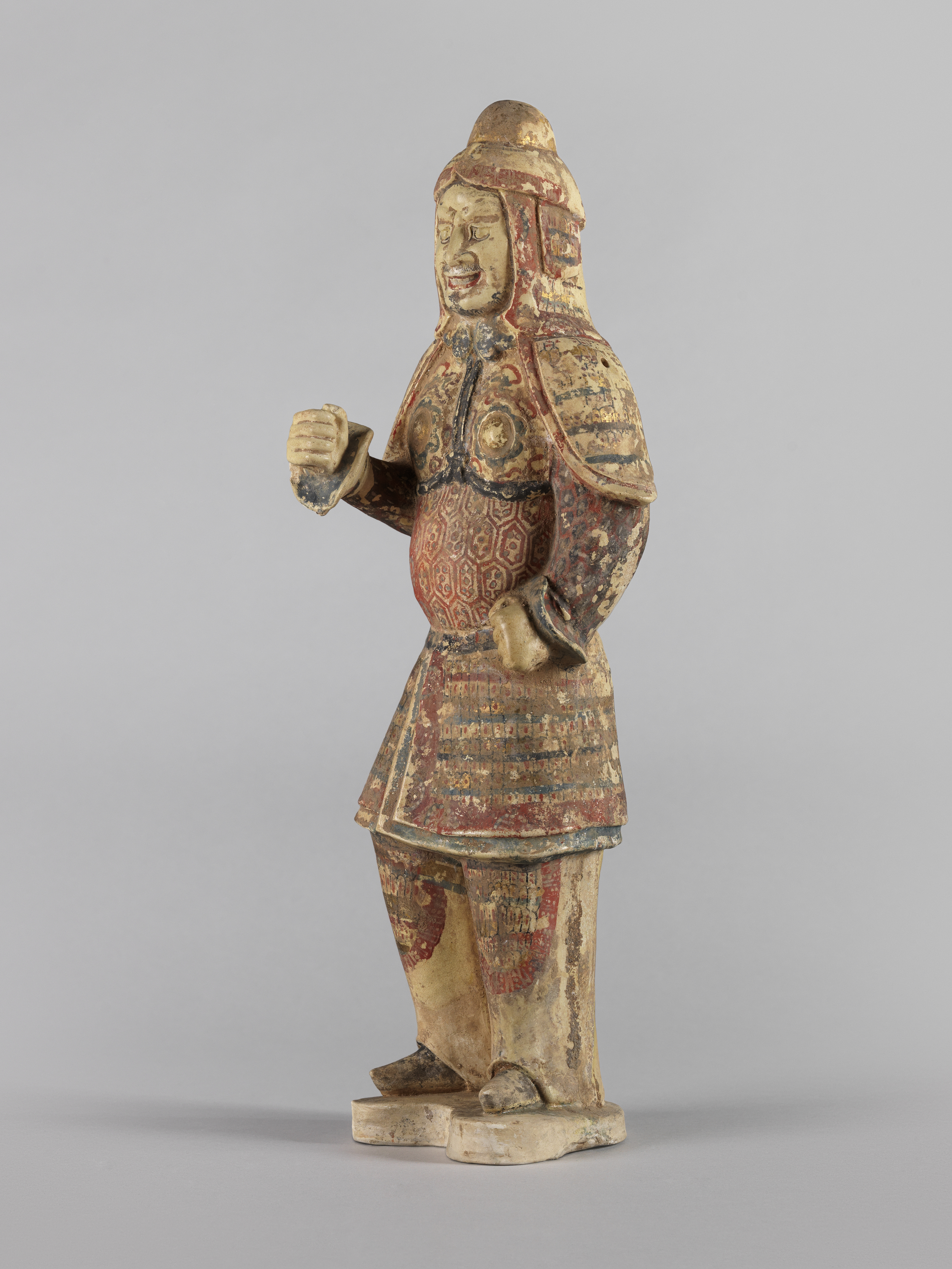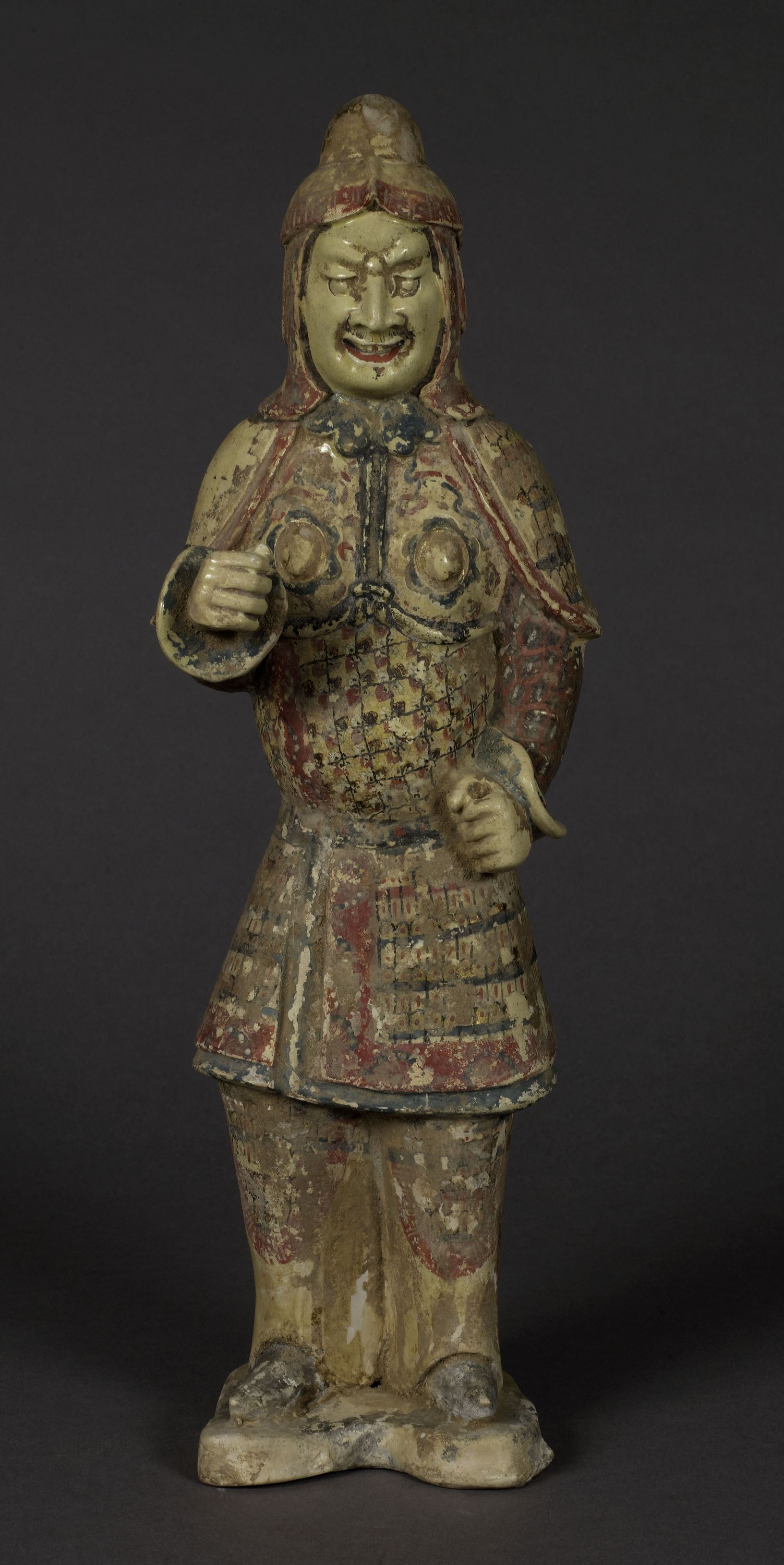
Guerrier
Terre cuite, Moulage, Couleurs - Pigments, Dorure
Statuette, Mingqi
Don manuel : Société des Amis du musée Cernuschi
M.C. 2006-72
These guards would have held a spear in their right hand, and, in their left, probably a double-edged sword, made of a perishable material. Today, both weapons been lost. Their faces with a strong nose, pronounced eyebrows and relatively abundant facial hair points to their western origin, no doubt central Asian. They are remarkable in the realism of their faces, considerable size and well-preserved polychrome heightened with gold. Although they belonged to a group, the two soldiers differ in their pose and breastplate decoration. One of them wears armour made of hexagonal plates or scales; the other, his weight resting on his bent right leg, wears square-plated armour.
Whether such armour actually existed and the extent of artistic licence in these ancient times is open to debate. Sui warriors retaining their polychrome are very rare, however. There is a mingqi in the Museum of Fine Arts in Boston, which is small but which also has gilded decoration; and the Tenri Museum in Tokyo has a pair of guards, acquired before the 1970s, which are almost identical in size (47.3 cm) to the Cernuschi Museum figurines. The rich and varied armour design of the latter features hexagonal scales in the upper part and rectangular scales on the skirt. One of the two is resting his weight on his right leg.
All of these soldiers wear gaiters suspended on the inside of the knee that probably protected their mounts from their rough scaly leg armour.
